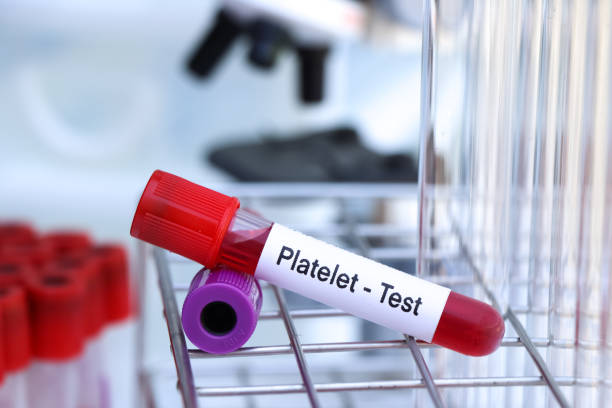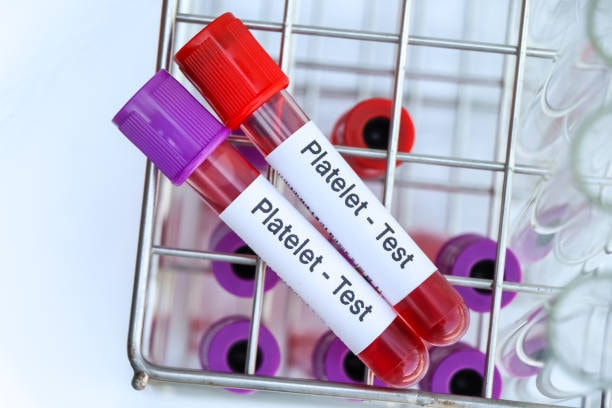
PDW Blood Test: Understanding Platelet Distribution Width & What Your Results Mean
Time to read 7 min
Time to read 7 min
The platelet distribution width PDW blood test determines the variation in platelet size and plays a crucial role in diagnosing and screening of various medical conditions. It points towards the activation and function of platelets. The PDW test is performed to determine the cause of abnormal amounts of platelets. Understanding this test offers significant insights into your blood health and allows you to get the necessary treatment and interventions.
PDW is a significant marker in a CBC (complete blood count), and its value offers important insight into certain health conditions, particularly those associated with platelet function or the body’s ability to react to clotting and bleeding. An abnormal PDW value indicates many possible health issues.
This article explores the information about PDW platelet distribution width, high and low values of the PDW blood test, the connection between PDW and platelet-related blood disorders, and what your results mean.
The PDW blood test is a crucial part of the platelet count test assessment. Platelets or thrombocytes are colorless cell fragments found in the blood that are necessary for blood clotting and wound healing. Platelets form clots and prevent bleeding when blood vessels get injured.
The PDW test measures the inconsistency or distribution in the size of platelets. It looks into the variation of your platelet size. Typically, platelets are the same in size; however, when your body is stressed or experiencing a health condition, platelet size may vary. The high or low PDW test value can indicate many health conditions, while normal PDW levels make it a significant marker in diagnostic blood tests.
Evaluating how well platelets function helps recognize if an individual can form blood clots and maintain proper blood flow. Abnormal platelet function may be a sign of certain health problems, such as excessive bleeding, that require further investigation and management. A PDW blood test is important for detecting blood disorders as it spots platelet distribution and function.
The PDW blood test and platelet count test both evaluate platelets but measure various aspects of these blood cells. Platelet count points to the total number of platelets in the blood sample; on the other hand, PDW measures the variation in platelet size.
PDW and MPV are platelet indicators that offer significant insights into the function and activation of platelets and potential thrombotic risk when considered together. Mean platelet volume indicates the average size of platelets, and PDW indicates the variation in the size of platelets, targeting the heterogeneity of the platelet population.
High MPV is usually associated with larger-sized and more reactive platelets, suggesting a greater risk of thrombosis, and a high PDW value indicates an extensive range of the sizes of platelets that can be associated with platelet activation and vascular disease.
PDW is vital as it reflects the changes in platelet sizes in the blood that can suggest various health conditions. The PDW test is a part of the complete blood count and provides crucial insights into the platelet functioning, and it can be a significant marker for certain health conditions such as vascular diseases, low platelet count, certain types of cancers, and bone marrow disorders.
PDW test measures the variation in platelet size in your blood. Typically, PDW blood test normal value ranges between 9-14 fL; however, some laboratories may use a slightly varied range, such as 9.6-15.0 fL.
Certain factors can influence PDW readings, including:
Age: Because of the progressive platelet activation, PDW may increase with age.
Medications: Certain medicines may affect the size and distribution of platelets, modifying PDW readings.
A high PDW value indicates an increased variation in platelet size, indicating that platelets are not of the same size. High PDW blood test can be associated with many health conditions such as cardiovascular risks, inflammation, and certain hematologic conditions.
A high PDW can be caused by inflammation, underlying health conditions, and certain medications. PDW measures the size variability, and an increased PDW indicates the presence of smaller and larger size platelets in blood.
An elevated platelet distribution width is associated with increased variation in platelet size that reflects platelet activation or underlying health issues. Symptoms associated with high PDW include dizziness, headaches, numbness, vision changes, weakness, bruising, or bleeding.
High PDW can potentially indicate various health problems and can be associated with a greater risk of certain health conditions.
A low PDW blood test value usually points to that your platelets are of consistent platelet size, indicating a potential problem with platelet production, function, and bone marrow function. Low PDW can be associated with certain health concerns, such as certain infections, nutritional deficiencies, and bone marrow disorders.
Generally, low PDW shows that platelets in the blood sample are of a similar size with less variability. The causes of low PDW include nutritional deficiencies, bone marrow disorders, and certain chronic diseases.
The common symptoms of low PDW value include bleeding problems, easy bruising, and fatigue.
Platelet distribution width is a part of the complete blood count, which also includes measurements of white blood cells, and it measures the variations in the size of platelets. It can help healthcare professionals evaluate platelet function and detect potential health problems.
Generally PDW blood test does not involve any specific preparation. However, if PDW is ordered along with other tests, fasting may be recommended. Make sure your doctor is aware of any medicines, vitamins, and supplements you are taking.
If your PDW test results are abnormal (high or low), it's important to consult your healthcare provider for an accurate diagnosis and proper management. Abnormal PDW can be associated with various health conditions, and your healthcare provider can recognize the underlying causes and evaluate the right treatment and lifestyle modifications.
In case of abnormal PDW, your healthcare professional may recommend further testing such as peripheral blood smear, bone marrow biopsy, and platelet function test to identify the underlying cause. Healthy lifestyle practices such as regular exercise, a healthy diet, and avoiding alcohol and smoking can significantly help manage PDW levels and overall health.
Platelet distribution width or PDW blood test is performed to analyze the variation in the size of the platelets. This test is a significant indicator to assess the activation and action of platelets. DW test help detect the underlying causes of abnormal platelet counts that can be associated with many health conditions that may lead to serious illness. Comprehending the PDW levels is important however self-diagnosis should be avoided. Always seek a healthcare professional's guidance for the interpretation of PDW results. Your healthcare provider can create the suitable treatment plans ensuring accurate management and treatment for the underlying conditions.
Both PDW and MPV are platelet indicators and provide significant information about the size and variation of platelets with various aspects of platelet morphology. PDW measures the variation in platelet size, while MPV evaluates the average size of platelets.
Diet and stress can potentially influence platelet distribution width. The nutrient intake and stress hormones affect the PDW test.
No, PDW is not a standalone test; it’s a part of complete blood count.
PDW levels may reach normal range on its own in particular situations such as if the abnormal levels are due to mild conditions. On the other hand, if the PDW abnormal levels are because of a severe medical condition, the treatment is required to regulate PDW.
***Medical Disclaimer - The following information is for educational purposes only. No information provided on this website, including text, graphics, and images, is intended as a substitute for professional medical advice. Please consult with your doctor about specific medical advice about your condition(s).
